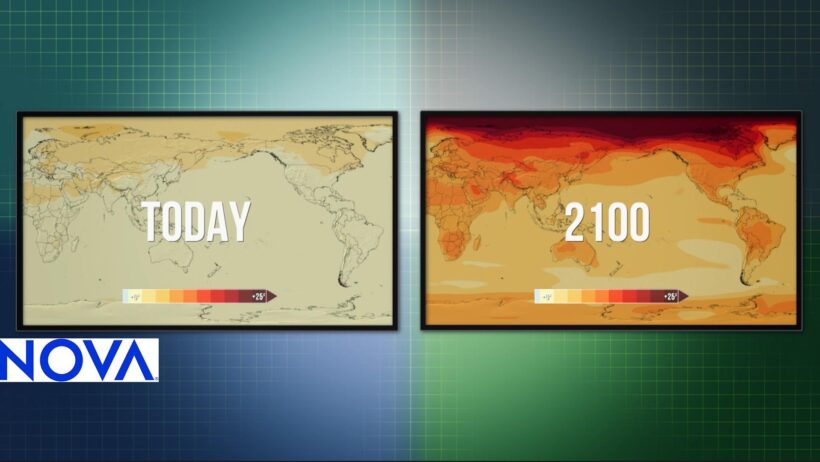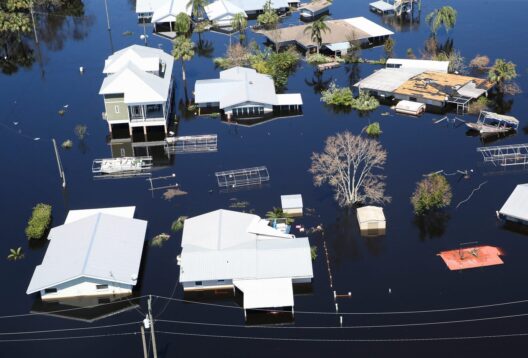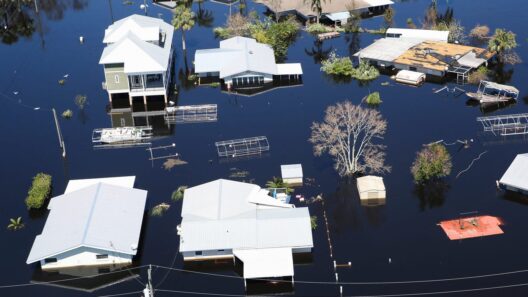Carbon loops encompass the intricate pathways through which carbon traverses various ecosystems, influencing the Earth’s climate in profound ways. Understanding these cycles is essential not only for comprehending Earth’s past climate dynamics but also for predicting its future. These loops consist of multiple processes, including photosynthesis, respiration, decomposition, and oceanic absorption, all of which are interconnected in a delicate equilibrium.
At the heart of the carbon cycle lies the interplay between the atmosphere, biosphere, hydrosphere, and geosphere. Carbon, in its multitude of forms, continuously shifts among these reservoirs. In its gaseous state as carbon dioxide (CO2), it is absorbed by plants during photosynthesis, transformed into organic matter, and subsequently released back into the atmosphere through respiration and decay. This fundamental mechanism underpins not only the sustenance of life but also regulates climate dynamics.
Why does this cycle captivate the minds of scientists and activists alike? Primarily, it is due to its implications for climate change. Elevated levels of CO2 in the atmosphere enhance the greenhouse effect, leading to global warming. As temperatures rise, feedback loops—both positive and negative—emerge, complicating our understanding of how future alterations in the carbon cycle might manifest. For instance, warmer temperatures can lead to the thawing of permafrost, releasing vast quantities of stored carbon, thereby perpetuating a cycle of increased warming. Conversely, reforestation efforts and carbon sequestration technologies present potential avenues for mitigating these emissions, revealing the dual nature of our actions within these loops.
The oceans play a pivotal role in the carbon cycle, acting as both a sink and a source. They absorb approximately 30% of atmospheric CO2, which leads to ocean acidification—a phenomenon detrimental to marine ecosystems. Coral reefs, for instance, are particularly vulnerable to these changes, as they depend on stable conditions to thrive. When carbon is sequestered through biological processes, such as the formation of calcium carbonate by marine organisms, it can be stored in sediments for millennia, provided that the delicate balance of the oceanic environment is maintained.
Human activities have perturbated this cycle significantly over recent centuries. Fossil fuel combustion, land-use changes, and deforestation have increased atmospheric CO2 concentrations to unprecedented levels. This anthropogenic influence challenges the natural resilience of carbon loops and heightens the incidence of extreme weather events, including hurricanes, droughts, and intense rainfall. These events further exacerbate the carbon cycle, creating a vicious cycle that underscores the urgency of addressing climate change through innovative solutions.
Moreover, the interdependence of carbon loops with other biogeochemical cycles, such as the nitrogen and water cycles, illuminates the complexity of Earth’s systems. Fertilizer runoff, for example, not only contributes to nitrogen enrichment but can also enhance carbon emissions through altered decomposition rates in soil. Such interconnectedness emphasizes the need for holistic approaches in environmental policies and climate action strategies, recognizing that interventions in one area may have cascading effects in others.
Carbon capture and storage (CCS) technologies have emerged as a salient solution to curb the excess CO2 emitted from industrial sources. These technologies offer potential pathways to maintain atmospheric carbon levels within safe limits while allowing for continued economic growth. However, implementation faces challenges including economic viability and public acceptance. Furthermore, reversing the impacts of climate change requires an integrated approach that combines technological advancements with natural processes, such as reforestation and soil management practices that enhance carbon sequestration.
A significant aspect of the future of carbon loops is in the nexus of science and policy. Climate models increasingly rely on accurate representations of these cycles to predict outcomes of various climate scenarios. Understanding the feedback mechanisms inherent in carbon loops, including how vegetation responds to rising CO2 levels and how soil reservoirs react to changing land use patterns, is vital for crafting effective climate strategies. Researchers are delving into sophisticated modeling techniques that can more precisely predict how various interventions will influence overall carbon balance in different ecosystems.
The fascination with carbon loops goes beyond mere scientific inquiry; they symbolize the interconnectedness of life on Earth. Every decision made regarding land use, energy consumption, and resource management reverberates throughout these cycles, affecting ecosystems worldwide. This realization imparts a deep responsibility upon humanity to act decisively and sustainably.
Public engagement and education are paramount in fostering a collective understanding of climate dynamics. Through interactive platforms and educational initiatives, individuals can become informed stewards of the environment. This includes recognizing local carbon footprints and advocating for practices that enhance carbon capture, such as supporting local agriculture, protecting forests, and promoting renewable energy sources.
As we move forward, the urgency in addressing the detriments of climate change becomes clearer. The nuance of carbon loops offers a framework not only for understanding the biological and physical systems that sustain our planet but also for galvanizing concerted action towards a sustainable future. Through a commitment to reducing carbon emissions, enhancing natural carbon sinks, and innovating solutions, society can navigate the complexities of the carbon cycle and help shape a climate future that is both livable and vibrant.
Ultimately, the narrative of carbon loops is that of resilience, interconnection, and the power of collective action. It serves as a reminder that the health of our planet and the legacy we leave for future generations hinge on our understanding and stewardship of these vital natural processes.







